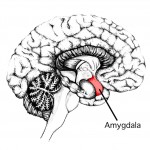In the last post we looked at how to engage the brain in learning. We looked at how the Reticular Activating System (RAS) acts as a filter which gives priority to information that is new or alerts our curiosity. The brain is hard wired to make predictions and then will give its attention to determining if that prediction will prove true.
After the information passes through the RAS it then passes to another part of the brain called the amygdala which acts like a switch. The amygdala ‘decides’ whether the information will go to the reactive part of your brain (the part responsible for the fight or flight response) or the part of your brain that is involved in reflective thinking and conscious thought (the prefrontal cortex).
In the younger years the prefrontal cortex is not as well developed as the reactive parts of the brain, especially when exposed to situations involving:
- Stress
- Frustration
- Anxiety
- Boredom
So what does mean to us as teachers?
If we can reduce (note I didn’t say eliminate) the above causes from a student’s classroom experience we allow them to enter a more alert and relaxed state allowing information to flow more freely through the amygdala to the prefrontal cortex). Now the reality is that we are not the saviours of the world! It is not realistic for teachers to take responsibility for the emotional state of each of our students. We can however take steps to teach our students the necessary skills to deal with stress in a positive way. This Post on Habits of the Mind deals with this.
Two strategies that I use in my class to teach students to be aware of their emotional state and to deal with their emotions in a positive way is:
- By conducting a mask activity (see tomorrows post)
- Allowing them to journal about the days activities.
So to recap…
As teachers it is best to engage your students in learning by arousing their curiosity allowing them to make predictions about what the lesson is about. This causes the brain to pay attention to its prediction to see if it was correct. The second key to engaging the brain in learning is to try and provide learning environments that are as free as possible from stress, boredom, anxiety and frustration. This allows the information to travel to the thinking part of the brain and become part of our conscious thought.

















